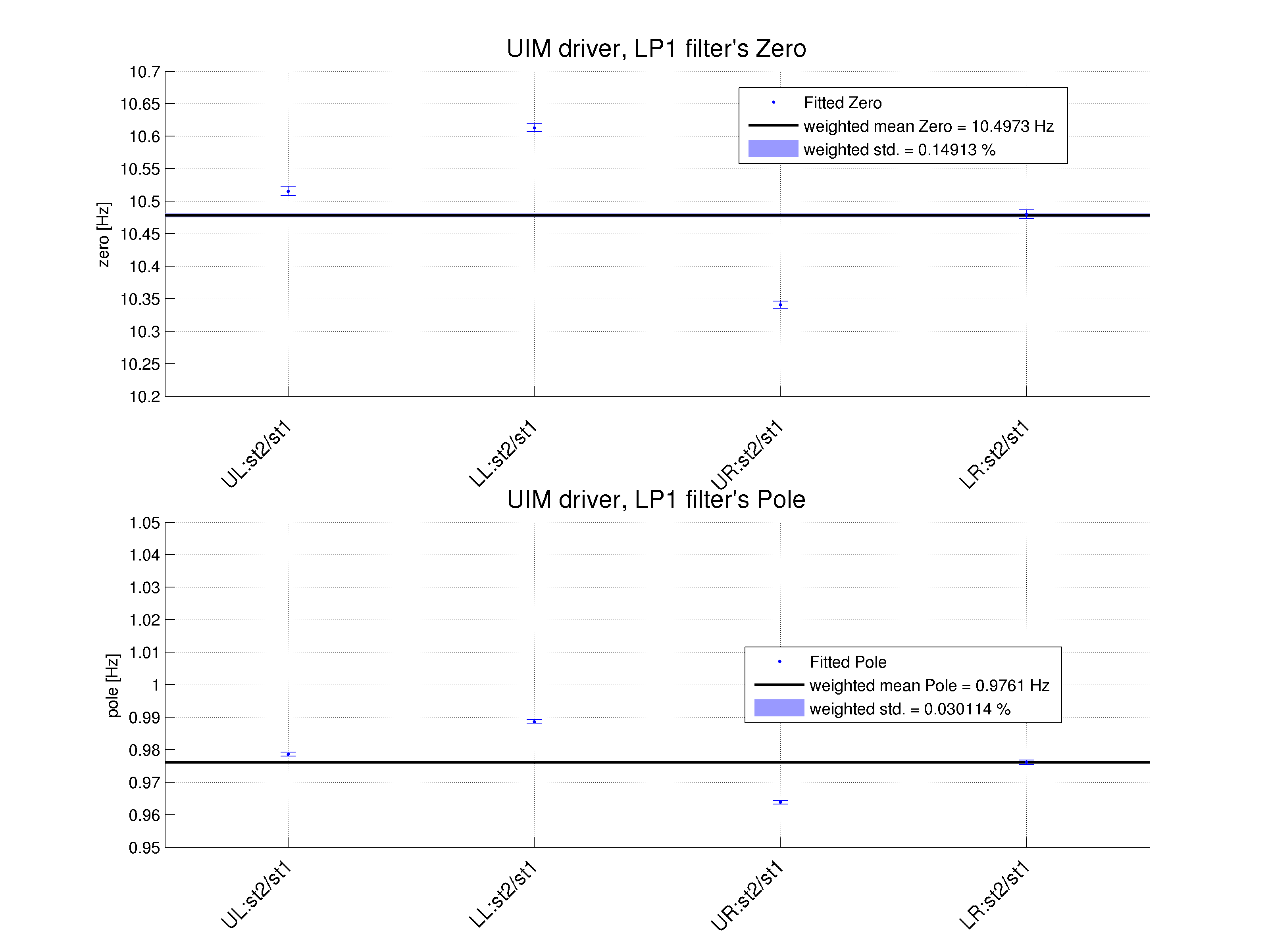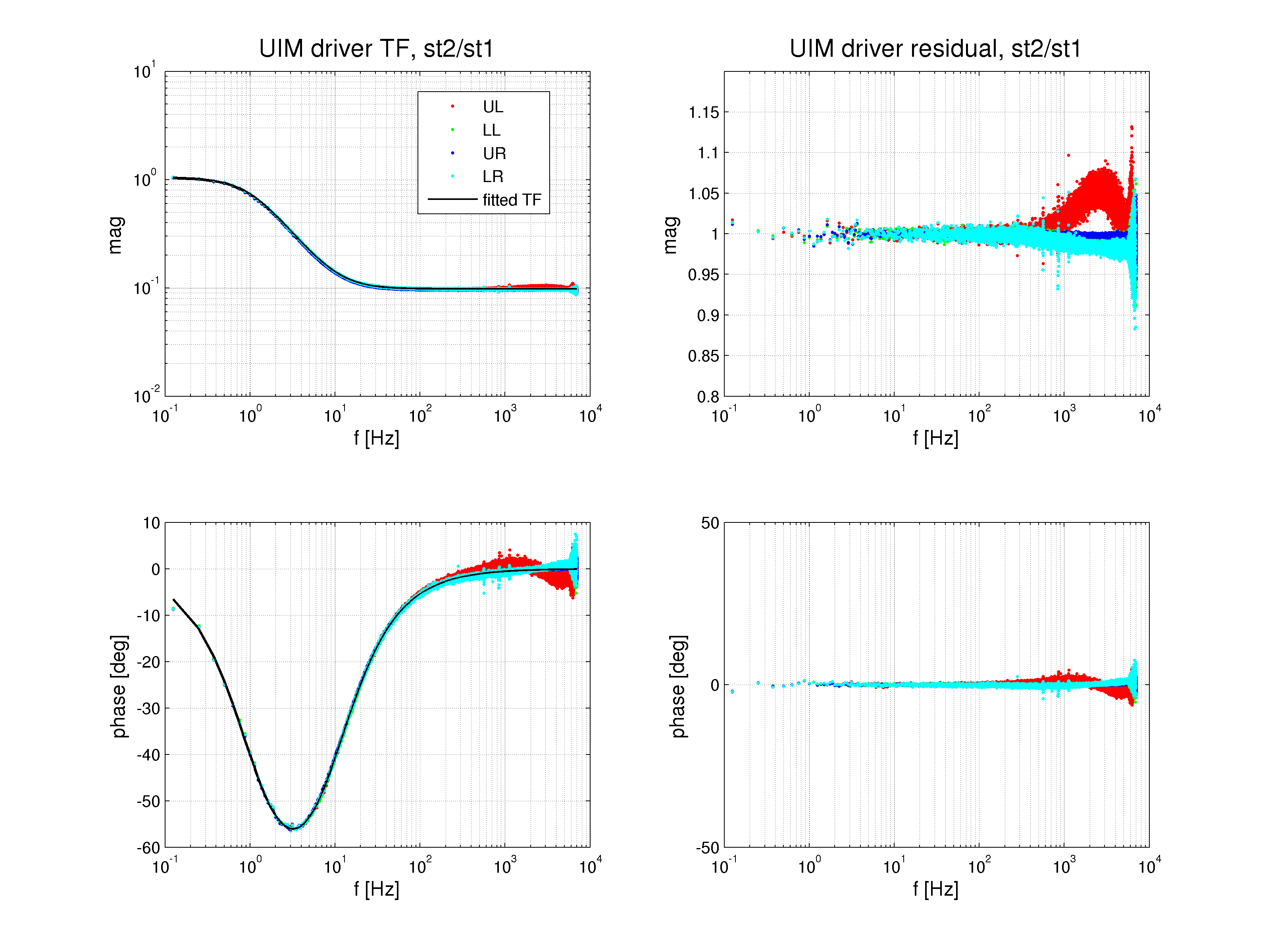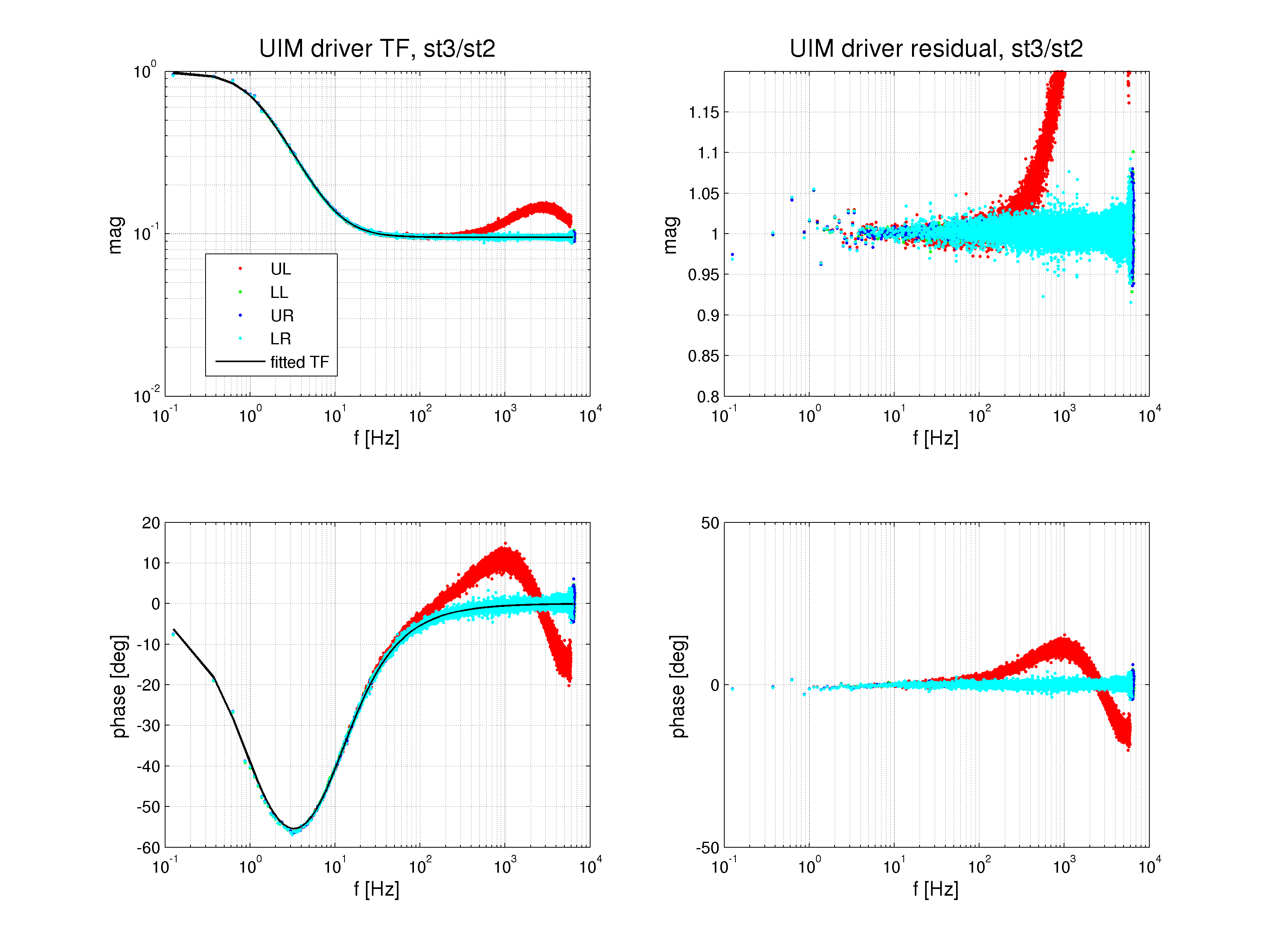Summary: We completed all of the most important PEM injections and I think we are good to go. Ambient magnetic fields are unlikely to produce DARM noise at more than 1/10 of the DARM floor. There is high magnetic coupling at the EY satellite box rack. Coupling of self-inflicted magnetic fields in the CS ebay may keep us from reaching design sensitivity unless corrected. Most site activities will not show up in DARM, but moderate impacts in the control room/EE shop/Vacuum shop etc. can produce DARM signals. Any such events can, like signals from off-site, be vetoed by redundant vibration sensors. Although vibration coupling analysis is ongoing and not presented here, ambient vibrations produce noise at near DARM floor levels at HAM2, 6 and the PSL table and dominate DARM around 300 Hz. Radio signals at 9 and 45 MHz would have to be at least 100 times background on the radio channels before they start to show in DARM. Some sensor issues are also discussed.
Introduction
Between Tuesday and Saturday, we made roughly 100 injections to measure the environmental coupling levels to the LHO interferometer. The table shows the number of locations in each building.
|
Injection type |
CS locations |
EX locations |
EY locations |
|
magnetic |
5 |
3 |
3 |
|
acoustic |
5 |
3 |
3 |
|
shaking |
6 |
0 |
0 |
|
radio at modulation frequencies, etc. |
1 |
|
|
|
site activities |
10 |
|
1 |
In most cases we attempted to inject from a great enough distance that the field levels at coupling sites would be about the same as they were at the sensors nearest to the coupling sites. For magnetic and acoustic injections we split the potential coupling sites into regions. In the LVEA, these regions were usually the vertex, the ITM optical lever regions, the PSL, the input arm, the output arm and the electronics bay. At the end stations the regions were the VEAs and the electronics bays. For shaking, we selected particular chambers or sites that had been identified previously as coupling sites or potential coupling sites.
We started with analysis of magnetic coupling because of its importance to the stochastic GW search, and results are presented below. In addition, it is important to set up site rules for the run so analysis of site activity injections is also included here. Other coupling analyses are not yet ready, but preliminary observations are discussed below.
Magnetic field coupling
Figure 1 summarizes results with single magnetic coupling functions for each station in meters of differential test mass motion per Tesla of magnetic field. In general, our coupling functions are applicable to signals originating at a distance from the coupling site that is large compared to the distance between the sensor and the coupling site. If the signal originates much closer to the coupling site than the sensor is, these coupling functions are likely to underestimate the resulting test mass motion. The magnetic coupling functions of Figure 1 are based on the maximum regional coupling observed at each station. The highest of the 3 stations should be used for estimating Schumann resonance inter-site correlation.
The lower panel in Figure 1 shows S6 (iLIGO) magnetic coupling functions. At 20 Hz the highest coupling is about an order of magnitude lower than it was in iLIGO. At 100 Hz aLIGO is about 2 orders of magnitude better. This is mainly due to the lack of magnets on the test mass. The coupling functuions are not as linear in a log-log plot as they were for initial LIGO, most likely because test mass magnet coupling is no longer dominant and coupling to electronics and cables are significant contributions.
The much higher coupling at EY than at EX is likely due to coupling to cables and connectors in the satellite amp rack. We used a small coil to track the coupling to the satellite amp rack in the VEA. It was clear that the excess coupling was at this rack, and not, for example, at the rack next to it, but we could not find a specific coupling site within this rack. This is what would be expected for cable coupling and so we should probably check the cable shield grounding for the coil drive signals in this rack. However, even at this elevated coupling level, the estimated DARM noise for ambient field levels is more than 10 times lower than the O1 DARM floor.
Figure 2 shows an example of spectra from an injection. This injection focuses on the vertex, and uses a coil set up about 20m down the Y-manifold. The top plot shows magnetometer spectra and the bottom plot DARM spectra. The injection is a 6Hz ramp, producing a 6Hz comb in the red injection spectra (blue are no-injection). The amplitudes of the peaks produced in DARM are divided by the amplitudes of the peaks in the magnetometer signal to give coupling functions in m/T. Estimates of the noise contribution to DARM are made by multiplying the coupling functions by the local ambient background from the injection-free spectrum. These estimates thus assume linearity. While vibration coupling has usually been found to be linear, we have found that, in certain bands, acoustic coupling can be non-linear, in which case the estimates are upper limits. To minimize the overestimate, we try to inject with as little amplitude over ambient as possible. We have not observed non-linear magnetic coupling.
The estimate of the ambient magnetic contribution to DARM for the injection of Figure 2 is shown as black squares. Also included in the figure are estimates for the other corner station injection zones. The closest that the estimates come to the O1 DARM noise floor is about a factor of ten below for coupling in the ebay at 12 Hz. The ebay does not have the highest coupling function, but it does have the highest ambient fields. Thus the ebay would not be the most sensitive place for Schumann resonance coupling, but, according to this estimate, coupling of self-inflicted fields in the ebay will keep us from reaching design sensitivity unless we make improvements.
Other environmental coupling
As with magnetic coupling, coupling of ambient RF (including self-inflicted) does not seem to be a problem. However, vibrational coupling noise reaches within a factor of a few of the DARM noise floor at a couple of locations, and in bands around 300 Hz dominates DARM. It is likely that our sensitivity to site activities is due to coupling through the HAM2 and 6 ISIs. We should be able to test this possibility with the coupling functions we measured for GS13s in the HAMs. In addition to HAMs, PSL table/periscope vibrations produce the peaks near 300 Hz via beam jitter, and perhaps contribute more broadly to the DARM floor.
No noise from pre-identified scattering sites
Scattering does not seem to be a problem at current sensitivities. We installed shakers at sites that had been identified through photographs taken from the points of view of the test masses and other optics in order to identify potential scattering coupling sites (here). We mounted shakers at the GV8 valve seat, the input mode cleaner beam tube, the signal recycling cavity beam tube and the BSC2 chamber walls (connected to the TCS mirror holders), all of which had been identified in photos as potential sites (here). Increasing motion at these sites by 2 orders of magnitude did not produce features that we saw in DARM.
Sensor problems
All identified coupling sites were well covered with sensors, but we found a few sensor problems. The most important of these are problems with the VEA magnetometers at the end stations. These are essential PEM sensors since there is no redundancy. These magnetometers did detect our injected magnetic fields, but the signal conditioning boxes appear to be producing approximately 1Hz glitches that effectively raise the sensor noise floor by an order or two of magnitude. We think that it is the conditioning boxes because we swapped out the filter boxes and set up a separate magnetometer nearby that did not see these glitches. We were unable to replace the boxes because we found no working spares. If we cannot replace these by the run, I suggest swapping them with the e-bay magnetometer setups in the end stations, where there is redundancy.
A more minor problem is that the axes of the input arm magnetometer and the two VEA magnetometers appear to be incorrect. I swapped the axes on the input magnetometer, but did not get to the VEA magnetometers. These should be checked.
Incomplete injections
We ran out of time and were not able to make shaker injections at the end and mid-stations. Perhaps we can do these during the run using the commissioning budget.
Site activities
We should expect coupling of site activites since vibration coupling levels for ambient, non-transient vibration levels are near or at the DARM noise floor. Figure 3 has tables showing all of the site activity injections, with the ones that showed up in DARM marked in red, and a link to Nutsinee’s spectrogram analyses.
The things that showed up in DARM:
· large super ball dropped in control room from about 5 feet
· hammer dropped from 4 feet in vacuum lab next to EE shop
· jumping in LVEA changing area
· jumping in control room
· setting car battery down in OSB shipping area
· sudden braking of silver van (things fly off seat) in high bay area
Some of the things that didn’t show up in DARM
· sudden braking (things fly off seat) in most other areas, including just outside of EY
· car horns
· crowds walking in control room or halls (no jumping)
· loud music in control room
· rolling in chair across control room
· bouncing on seating/exercise ball in control room
· airlock and external door actuation
· slamming doors in office area
· outer roll up door actuation, OSB shipping
· quick human movements in the OSB optics lab
In summary, sudden impacts in the control room, EE shop, vacuum lab and all other areas on the lab side of the air lock may cause events in DARM. This includes jumping, dropping heavy (>1lbs) things and quickly setting down heavy packages. I don’t think that we need to dramatically alter our usual activities because of this observation; we just need to be careful. I say this because we can veto all of these events with the highly redundant PEM and SEI vibration monitoring systems, just as we can veto signals from off-site. But impacts in the control room/lab/shop area can produce DARM events, so we should be mindful of minimizing these impacts.
We see no evidence that a drive down the arms and a trip into the mid/end stations will be more likely to produce events in DARM than control room activities. Tour crowds in the control room are also unlikely to produce DARM events, unless they jump around or knock chairs over. Just as for our own activities, we would rely on the sensor systems to veto any events that these tours produced.
We should be able to identify the coupling sites for these site activities once we have coupling functions for vibrational signals (stay tuned). In the mean time, I would speculate that the coupling sites are mainly HAM2 and 6, up through the ISI suspension, and, possibly, increased vibration of the PSL table.
Robert Schofield, Anamaria Effler, Jordan Palamos, Nutsinee Kijbunchoo, Katie Banowetz with help from crowds of others.




























